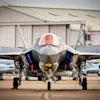When I was a kid and I first saw Gene Wilder portray the eccentric Roald Dahl character Willy Wonka, I was instantly a little bit scared, but 100 percent hooked. And now, as an adult who covers the manufacturing industry, I can’t help but observe the many, many compliance problems rampant in the film, the least of which includes lickable wallpaper lining the interior of a sanitary food processing plant.
I guess I’m not the only one who has wondered how Willy Wonka’s chocolate factory would look in real life. According to a report developed by Advanced Technology Services, a service provider designed to help minimize downtime and improve productivity for manufacturers, if Willy Wonka’s factory were put into play in today’s dollars it would cost about $225 million to reproduce. Here’s how they break it down:
The ATS report estimates that Wonka’s chocolate factory would be on par in size and production capability to a major candy brand like Nestle or Cadbury. Based on this, they say it would cost about $2 million just to keep the lights on.
If the chocolate river came to life, 150,000 gallons of liquid chocolate, along with pumps and heaters would set Wonka back about $32.7 million – or $47 million if the chocolate were organic. Not covered in the report: what it would cost to sanitize the chocolate river after Augustus Gloop falls in… I’m going to guess a lot of dollars.
With the average chocolate worker making about $50K per year, ATS estimates that the bustling team of Oompa Loompas would carry a $73 million pricetag, and then tack on another $8 million plus for healthcare.
ATS also estimates the cost of the flying glass elevator at $109 million, so I think we’ve identified a pretty easy cost cutting opportunity. Maybe time to switch to a non-flying mezzanine.
Anyway, the point is – the chocolate factory would be an expensive real-life endeavor, so Wonka might want to focus on recurring revenue, and therefore, consider eliminating one specific product from his line: the everlasting gobstopper. You only have to buy one. What kind of business model is that?






















